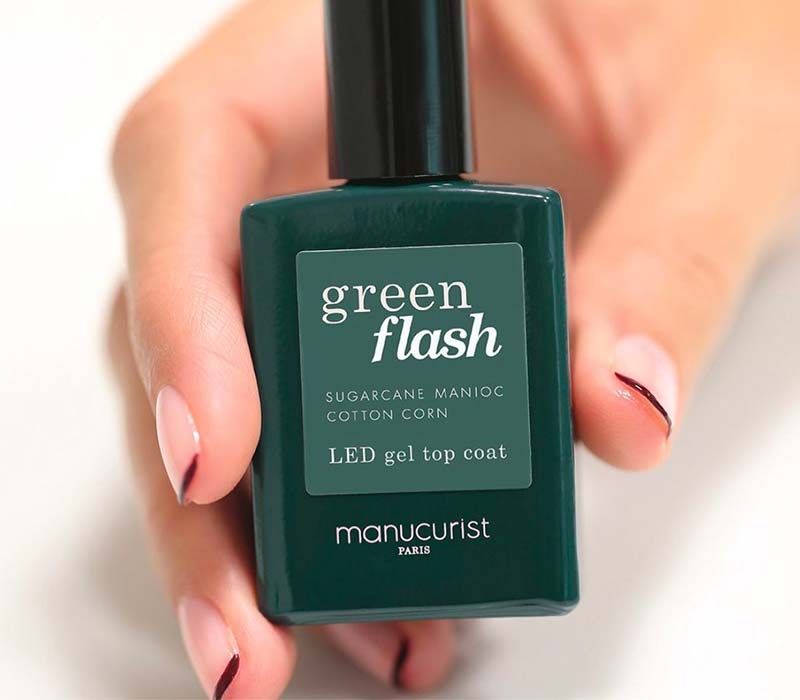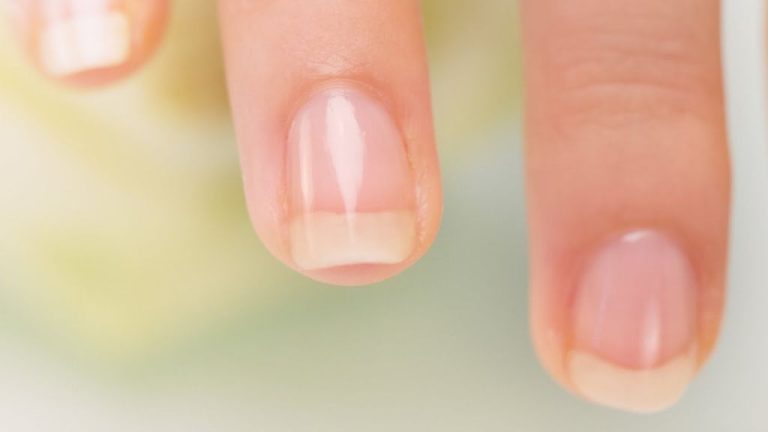Sustainable Nail Solutions: Eco-Friendly Products For Every Occasion
The nail industry has come under scrutiny in recent years for its negative environmental impact. With rising popularity of nail services like acrylics, gels, and dip powders, the waste generated from nails has grown exponentially. According to data from Green Circle Salons, the North American beauty industry sends 877 pounds of waste to landfills every minute (https://www.refinery29.com/en-us/are-acrylics-gel-press-on-nails-bad-for-environment). The chemicals used in traditional nail products can also be hazardous, with nail technicians exposed to high levels of volatile organic compounds (VOCs) on the job (https://www.ncbi.nlm.nih.gov/pmc/articles/PMC6565444/). As consumers become more eco-conscious, there is a demand for more sustainable options that are better for human health and the environment.
The Problem with Traditional Nail Products
Many traditional nail products like polish, acrylics, and gels are made with toxic chemicals that can be harmful to human health and the environment. Some of the most concerning ingredients found in nail products include:1
Toluene – a volatile organic compound found in many polishes that has been linked to developmental and reproductive toxicity.
Dibutyl Phthalate (DBP) – a plasticizer chemical added to help nail polish flexibility that is a suspected endocrine disruptor.
Formaldehyde – a known carcinogen still found in many nail hardeners and polishes.
Frequent exposure to the fumes from these chemicals, especially in the close quarters of a salon, can cause headaches, dizziness, and other health issues for manicurists.2
Traditional nail products also generate a lot of plastic waste from packaging and cotton swabs, pads, and sheets used during manicures and pedicures. Most is not recyclable and ends up in landfills. The acrylics and gels used in extensions require filing and sanding that generates plastic nail dust, also becoming waste.
Eco-Friendly Nail Polish
Traditional nail polishes often contain harsh chemicals like toluene, formaldehyde, and phthalates that can be harmful to human health and the environment. Eco-friendly nail polishes provide a safer alternative by excluding these toxic ingredients and using more natural, plant-based formulas instead.

Eco-friendly polishes are usually water-based rather than solvent-based, making them much less likely to dry out the nails and surrounding skin. Many brands now offer polishes that are 7-free or 10-free, meaning they leave out 7-10 common nail polish toxins. Popular natural ingredients in eco-friendly polish include beeswax, vitamin E, and plant oils like bamboo and sunflower that help condition nails.
Some top eco-friendly nail polish brands to consider are RGB Cosmetics, Sundays, and Smith & Cult. RGB offers a wide range of on-trend 7-free polishes made in small batches. Sundays has unique 10-free polishes featuring bold colors and clean formulas. Smith & Cult makes vegan 8-free polishes containing natural ingredients like bamboo and walnut shells.
Transitioning to eco-friendly polishes is an easy way to avoid exposure to harmful ingredients while still enjoying beautiful nails. The natural formulas often yield longer-lasting manicures that nourish nails over time.
Vegan Nail Polish
Vegan nail polishes do not contain any animal-derived ingredients. Traditional nail polishes often use ingredients like beeswax, carmine, gelatin, and shellac. These ingredients come from animals and are not considered vegan.
Many popular nail polish brands now offer vegan formulas, including brands like Zoya, Essie, ORLY, and Sally Hansen (https://www.sallyhansen.com/en-us/nail-color/nail-color/pure). Vegan polishes use plant-based ingredients and are free of animal byproducts. They offer the same quality, color selection, and shine as traditional polishes.
Some of the top vegan nail polish brands include Ella+Mila, Pacifica, SpaRitual, and LVX (https://vegoutmag.com/fashion-and-beauty/best-vegan-nail-polish/). These polishes are cruelty-free, long-lasting, and available in a wide range of trendy colors and finishes.
Going vegan with nail polish is an easy way to make a more compassionate, eco-friendly choice. The quality is on par with traditional polishes, so you don’t have to sacrifice anything for your nails or the planet.
Reusable Nail Wraps
Reusable nail wraps are an eco-friendly alternative to traditional plastic press-on nails. Unlike single-use press-ons that get thrown away after one wear, reusable wraps can be worn multiple times. They significantly reduce plastic waste from nail products.
Reusable wraps are made of a gel polish that adheres to the nail without glue. Most are pre-polished in different designs and colors. After use, the wraps can be soaked in acetone to remove the polish and reapplied with a new design. Quality reusable wraps can be worn 5-10 times before disposal.
Brands like Shein and Decorate Your Nails offer a wide selection of reusable gel wraps in various shapes and sizes. The wraps can be trimmed and filed to fit your nails perfectly.
Reusable wraps let you change up nail looks often without creating plastic waste. For eco-conscious nail care, reusable wraps are a sustainable solution.
Eco-Friendly Nail Salons
More nail salons are adopting green practices and using eco-friendly products. Many are working to reduce their environmental impact by recycling, using LED lights instead of harsh UV lamps, and ensuring proper ventilation to reduce exposure to fumes. According to Ama Quashie, co-owner of a salon in the UK, “sustainable nail salons are springing up in Europe, mainly in the UK” (The Green Side of Pink).
Salons can use nail polishes and gels free from harmful chemicals like formaldehyde, toluene, and dibutyl phthalate. Brands like Orly and OPI offer vegan and cruelty-free nail polishes. Salons can also avoid single-use items and utilize reusable nail files, buffers, and tools to reduce waste. Many eco-conscious salons are moving towards plant-based ingredients, LED technology, and recycling programs to continue improving sustainability.
The demand for green nail services is growing. According to one article, “sustainable nail salons are popping up across the UK” offering vegan product ranges and planet-friendly practices (Elle). As customers become more aware of health and environmental impacts, they are seeking out greener salon options.
DIY Natural Manicures
For those who want complete control over the ingredients in their nail products, making them at home is the best option. There are many recipes for natural, non-toxic nail polishes, treatments, and oils using common kitchen ingredients.
A basic DIY nail polish can be made by combining ingredients like coconut oil, shea butter, beeswax, vitamin E oil, and natural pigments. Adjusting the ratios allows for different textures and finishes. Essential oils like tea tree oil and lavender oil can also be added for their therapeutic benefits.
Cuticle oil is another easy DIY, requiring just a carrier oil like jojoba, vitamin E oil, and essential oils. It helps hydrate and soften cuticles. Some popular essential oil options are lemon, rosemary, and frankincense. The website DIY Natural Nail Formulas provides various recipes for homemade nail products.
Making your own natural nail products allows you to avoid the harmful chemicals found in conventional polishes. It also reduces waste from nail product packaging. With some simple ingredients and recipes, beautiful, eco-friendly manicures are possible at home.
Recycling Nail Products
Proper disposal of nail products is important for reducing waste and protecting the environment. Many nail polishes, gels, acrylics, and removers contain harsh chemicals that should not go down the drain or in the regular trash. Fortunately, there are some recycling options for nail products.
Some nail salons participate in recycling programs through companies like Nailcycle that collect used polish bottles and safely separate the glass, plastic, and leftover chemical remnants so they can be properly disposed of and recycled. However, these programs are only available in certain areas. Check with your local salon to see if they recycle.[1]
For at-home manicures, try to use up all your polish before decluttering bottles. Make sure to tightly screw on the wand and lid to prevent leaking. Once empty, you can check if your community has a household hazardous waste collection event or facility where you can bring nail polish to be safely handled. Otherwise, the bottles may need to go in the regular trash.
When disposing of polishes, be sure to remove any remaining product by adding a bit of kitty litter, sawdust, or an absorbent material to the bottle. This helps dry out the polish so it won’t spill. Wipe the outside of the bottle clean before placing in the trash.[2]
Sustainable Nail Art
Nail art can be made sustainable by using eco-friendly glitters, plant-based glues, and reusable nail art accessories. Many glitters contain plastic microparticles that are harmful to the environment. Eco-friendly glitters use minerals, recycled glass, or eucalyptus cellulose as a biodegradable alternative. Eco-friendly options also exist for the glue used to adhere nail art like rhinestones and charms. Traditionally cyanoacrylate glue is used but plant-based, non-toxic alternatives derived from pine resin provide a sustainable option (source). Reusable nail art accessories like templates, tapes, and decals allow for creativity without creating additional waste. Storage containers help keep these accessories organized and easily accessible for multiple uses (source). With some simple swaps, nail art can be an eco-friendly form of creative expression.
The Future of Green Nail Care
The eco-friendly nail care industry is expected to see significant growth in the coming years. According to market research, the global nail care market is projected to reach $13.3 billion by 2025, with a CAGR of 5.4% (1). This growth is driven in large part by consumer demand for safer, more natural nail products made without harsh chemicals.
Several innovations in eco-friendly nail products are driving this market growth. These include polishes made with plant-derived ingredients like soy, potato, and corn (2); polishes infused with vitamins and herbs; and polishes free of the “toxic trio” – formaldehyde, toluene, and dibutyl phthalate (DBP) (3). Major nail polish brands like Orly, Essie, and OPI have launched extensive vegan and toxin-free product lines.
Reusable nail wraps made of wood, silk, or other sustainable materials are also gaining popularity as an alternative to single-use plastic press-on nails (4). Some salons now offer plant-based soaks, scrubs, and massage creams for manicures and pedicures.
Eco-friendly nail salons using green practices are also on the rise. These salons focus on natural lighting, non-toxic products, recycling, and reducing waste. Many are ditching acrylics and gels in favor of healthier enhancing services like buffing and cuticle care (5).
With consumer demand driving innovation in the nail industry, the future looks bright for sustainable nail products and services. The green nail care movement empowers consumers to make choices that are better for health and the environment.
(1) [https://www.linkedin.com/pulse/nailing-exploring-global-market-size-growth-projection-trends]
(2) [https://www.premiumbeautynews.com/en/the-global-nail-care-market-is,20710]
(3) [https://www.globenewswire.com/en/news-release/2024/01/09/2806544/0/en/Nail-Care-Products-Market-Projected-to-Achieve-a-Remarkable-4-8-CAGR-Promising-Flourishing-Growth-Opportunities-by-2030-By-Persistence-Market-Research.html]
(4) [https://www.allure.com/gallery/eco-friendly-press-on-nails]
(5) [https://www.mindbodygreen.com/articles/eco-friendly-manicure-pedicure-nail-salons]




